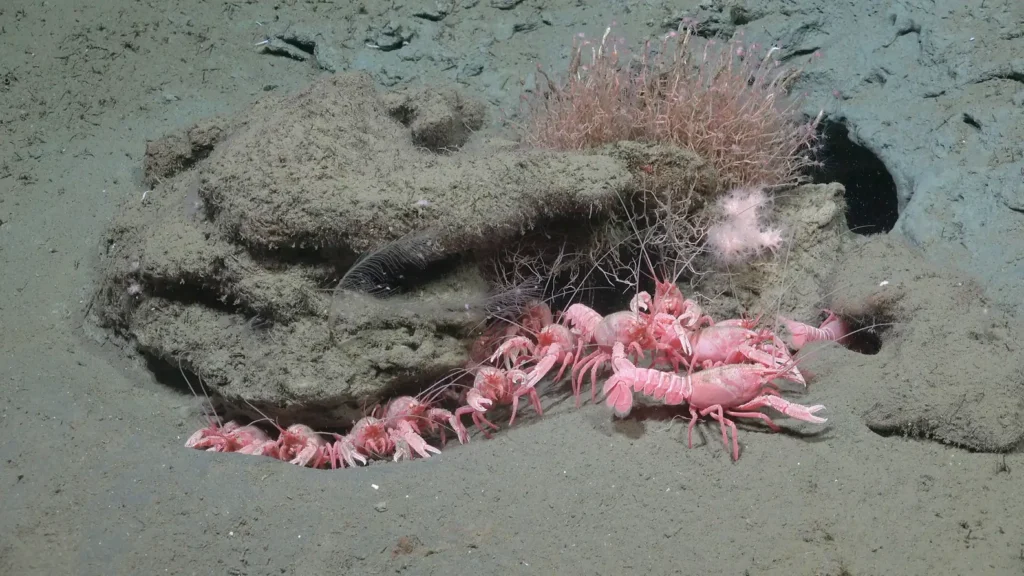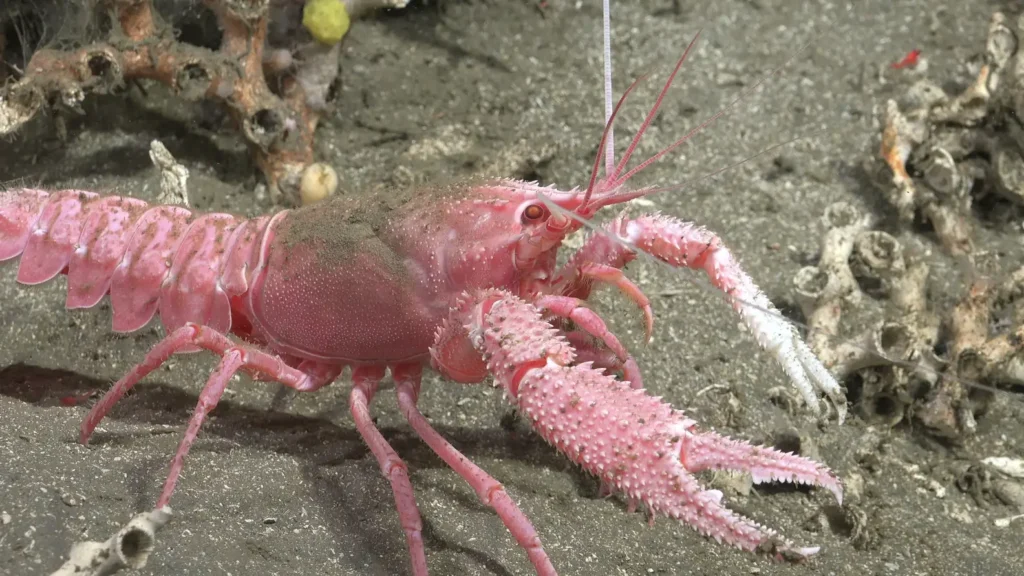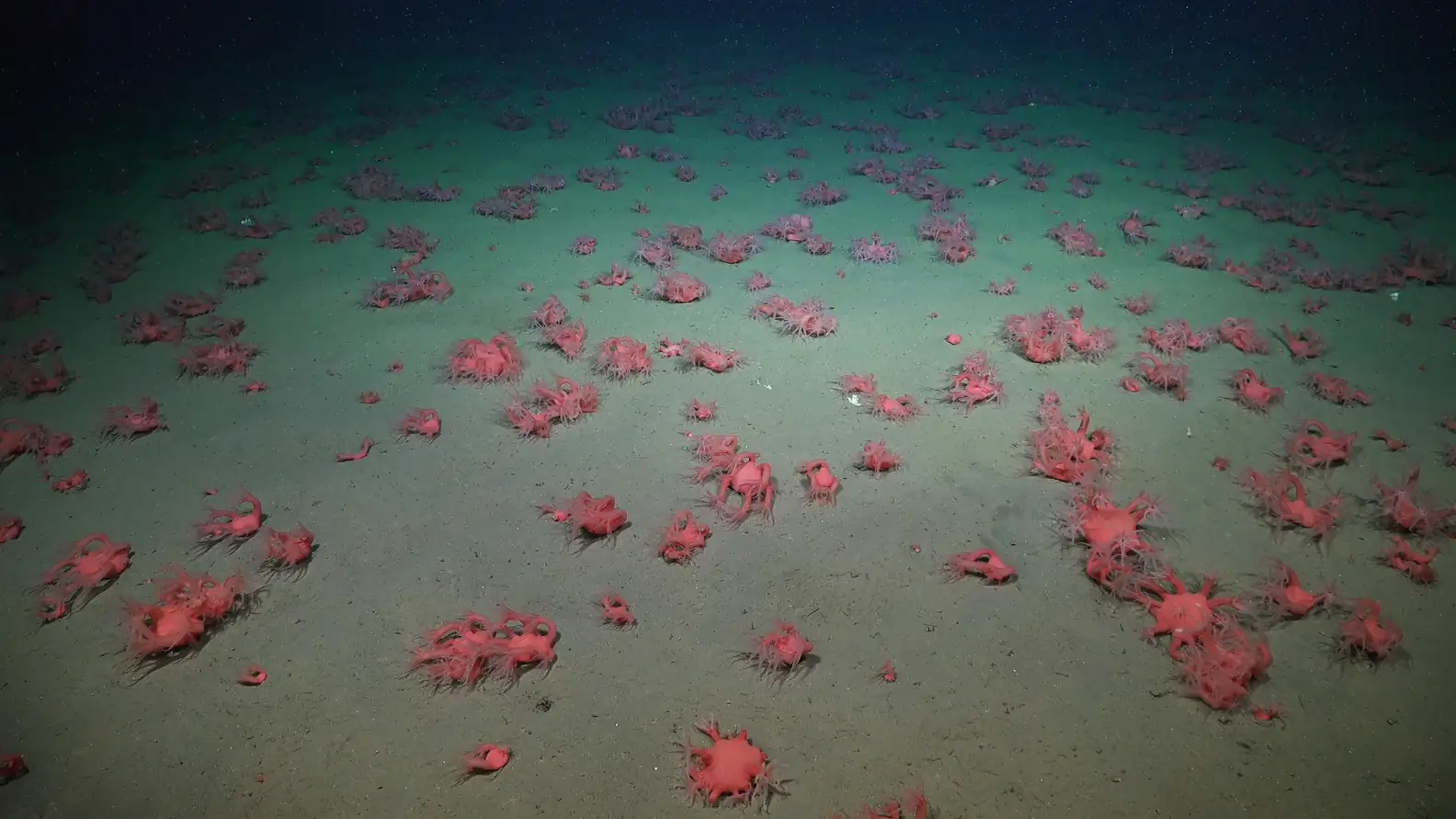Why do you think they’re pink?
Hidden World of Pink Lobsters Discovered Deep Beneath the Argentine Sea
A few months ago, researchers with the Schmidt Ocean Institute embarked on a groundbreaking expedition to explore one of South America’s least-known underwater regions — the Mar del Plata Canyon, a vast trench off Argentina’s coastline. Using their remotely operated vehicle, ROV SuBastian, scientists sent cameras plunging more than two miles beneath the surface to document the mysterious creatures that call the ocean floor home.

At 11,483 feet deep, this underwater canyon is twice the depth of the Grand Canyon, and before this mission, no human had ever witnessed what lived at its base. What the scientists saw on their monitors left them speechless — a dreamlike world bathed entirely in shades of pink.
Coral gardens, sea stars, and even octopuses shimmered in soft pastel hues, creating an otherworldly landscape.
“It was like looking at a cotton candy forest under the sea,” one of the scientists remarked.
Among the most striking discoveries were a group of bubblegum-pink lobsters, gathered around a rocky outcrop.
According to the Institute, the creatures are likely Thymops birsteini, known as the Patagonian lobsterette, a rarely seen crustacean species that inhabits the cold waters of the South American continental shelf. Though these lobsters had been spotted only a handful of times before, ROV SuBastian captured the most detailed footage of them ever recorded.
“They resemble classic lobsters — with two large claws, four pairs of walking legs called pereiopods, and a long segmented tail, or pleon,” the researchers explained.
Photos of the pink lobsters quickly went viral online, with one amused commenter dubbing them “Barbie’s lobsters.”

But their vibrant coloring isn’t just for show. In the inky depths of the ocean, reds and pinks appear black, making the lobsters nearly invisible to predators — a perfect example of how life adapts to extreme environments.
While the expedition revealed dozens of new-to-science species and deepened our understanding of the canyon’s biodiversity, it also delivered a sobering reminder: even these remote ecosystems aren’t untouched. ROV SuBastian’s cameras captured plastic waste and other debris scattered across the seabed.
“Deep-sea canyons are biodiversity hotspots that play crucial roles in ecosystem health, yet we still know so little about them,” said Jonathan Flores, a researcher with Argentina’s National Scientific and Technical Research Council.
The team hopes their findings will spark further study — and inspire more efforts to protect these fragile, pink-hued worlds hidden in the deep.
